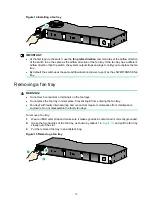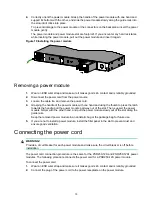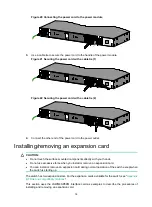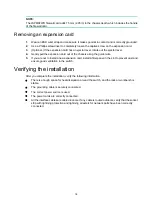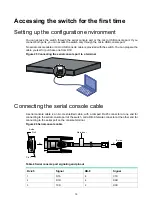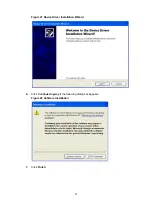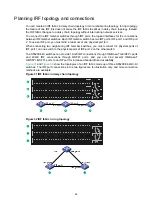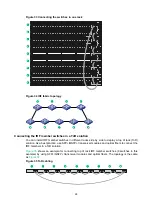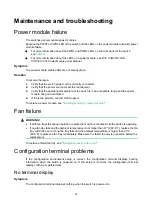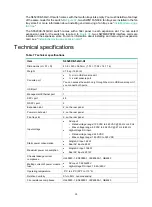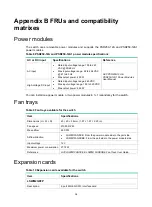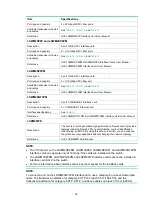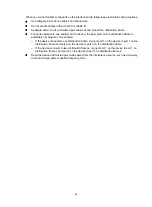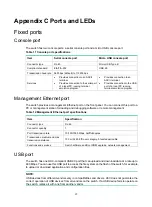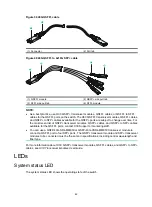
27
Identifying physical IRF ports on the member switches
Identify the physical IRF ports on the member switches according to your topology and connection
scheme.
shows the physical ports that can be used for IRF connection and the port use restrictions.
Table 5 Physical IRF port requirements
Chassis
Candidate physical IRF ports
Requirements
S6520XE-54QC-HI
•
48 SFP+ ports on the front panel
•
2 QSFP+ ports on the rear panel
•
Ports on the expansion card on the rear panel
Physical ports on the front
panel and different expansion
cards can be bound to the
same IRF port.
Planning the cabling scheme
Use twisted pair/SFP+/QSFP+/QSFP+ to SFP+ cables or SFP+/QSFP+ transceiver modules and
fibers to connect the IRF member switches. If the IRF member switches are far away from one
another, choose the SFP+/QSFP+ transceiver modules with optical fibers. If the IRF member
switches are all in one equipment room, choose twisted pair/SFP+/QSFP+/QSFP+ to SFP+ cables.
For more information about SFP+/QSFP+/QSFP+ to SFP+ cables and SFP+/QSFP+ transceiver
modules, see "
."
The following subsections describe several H3C recommended IRF connection schemes, and all
these schemes use a ring topology.
IMPORTANT:
In these schemes, all physical IRF ports are located on the same side. If physical IRF ports are on
different sides, you must measure the distance between them to select an appropriate cable.
Connecting the IRF member switches in one rack
Use SFP+ cables to connect the IRF member switches (9 switches in this example) in a rack as
shown in
. The switches in the ring topology (see
) are in the same order as
connected in the rack.

